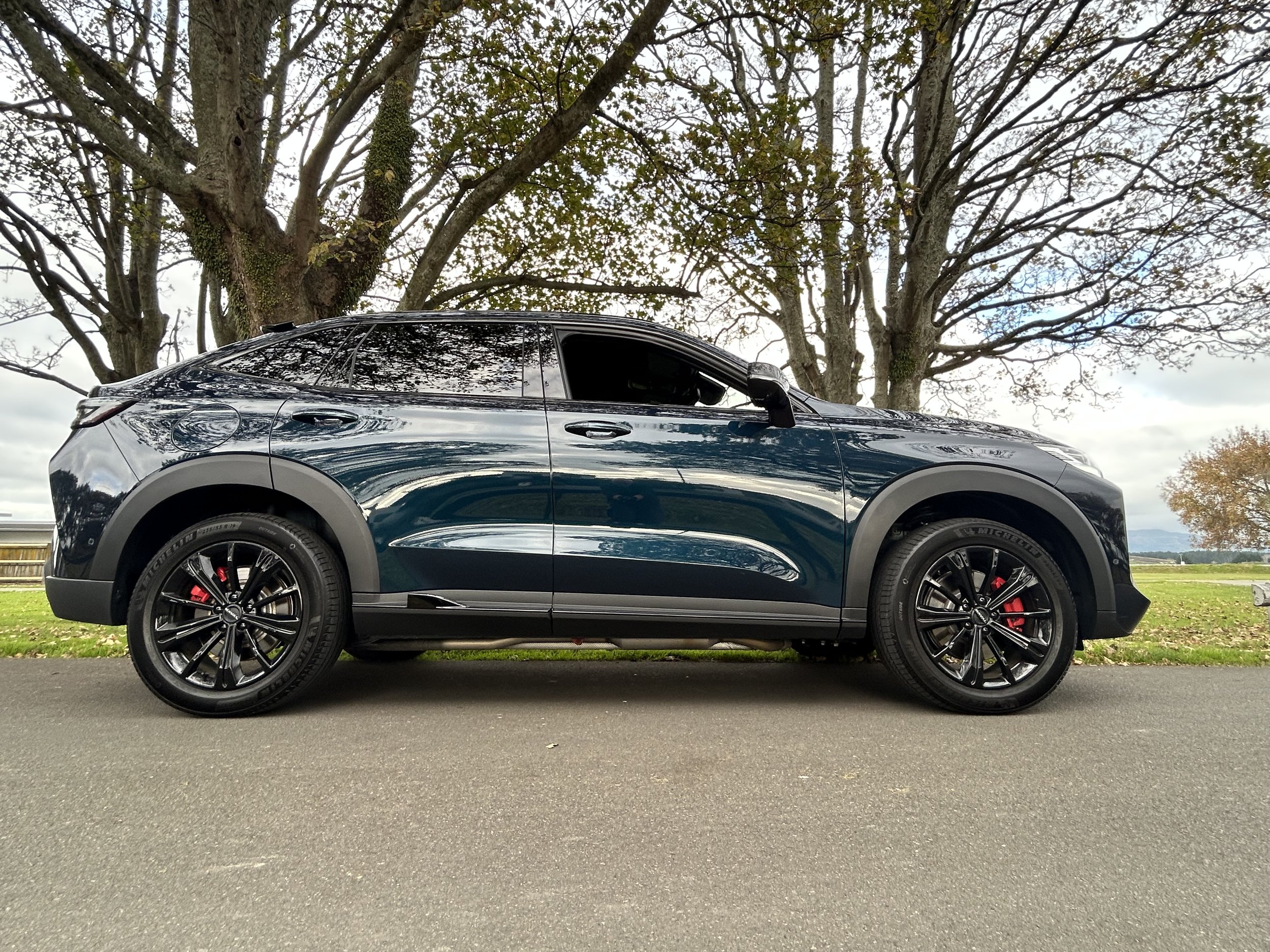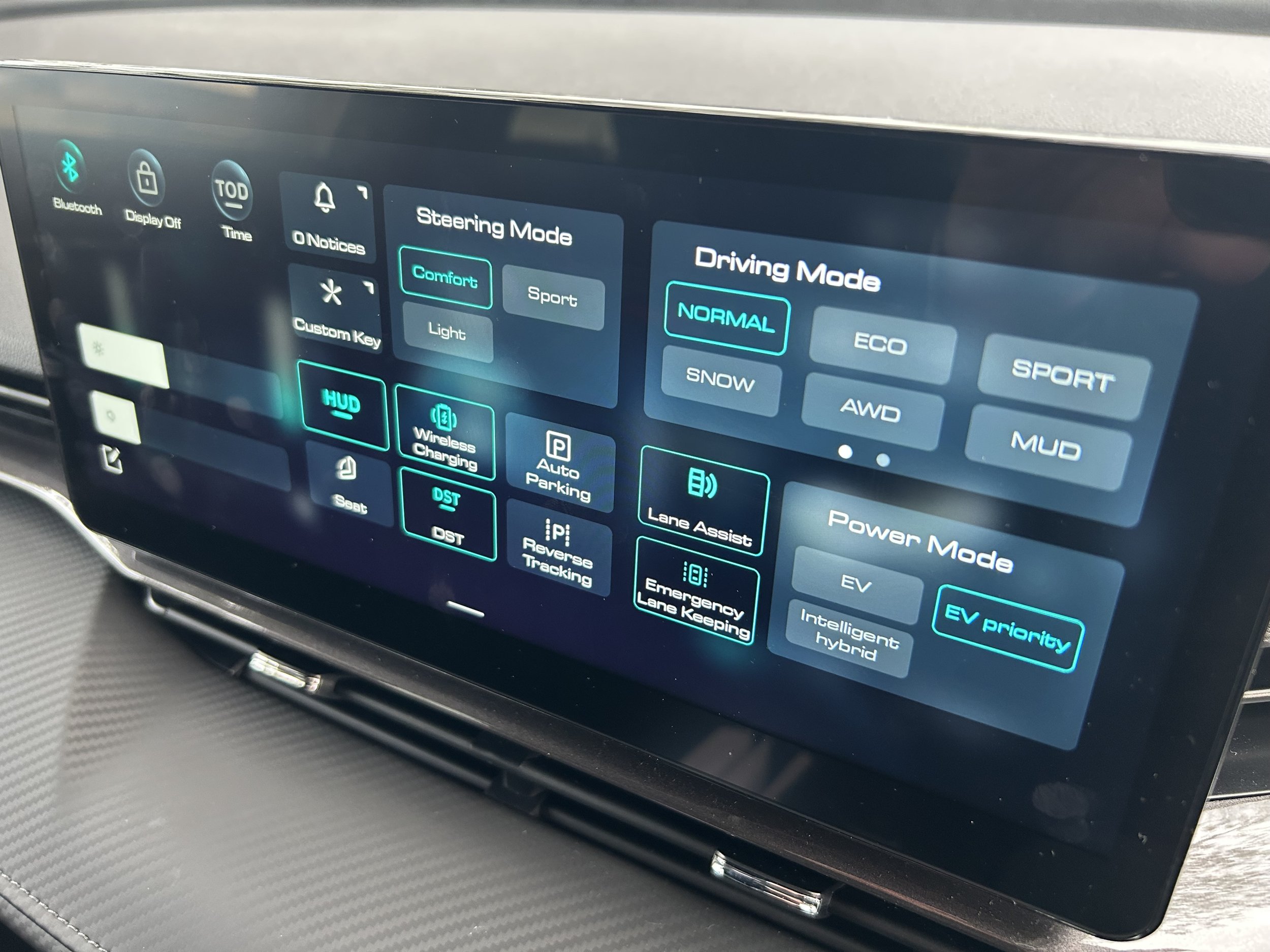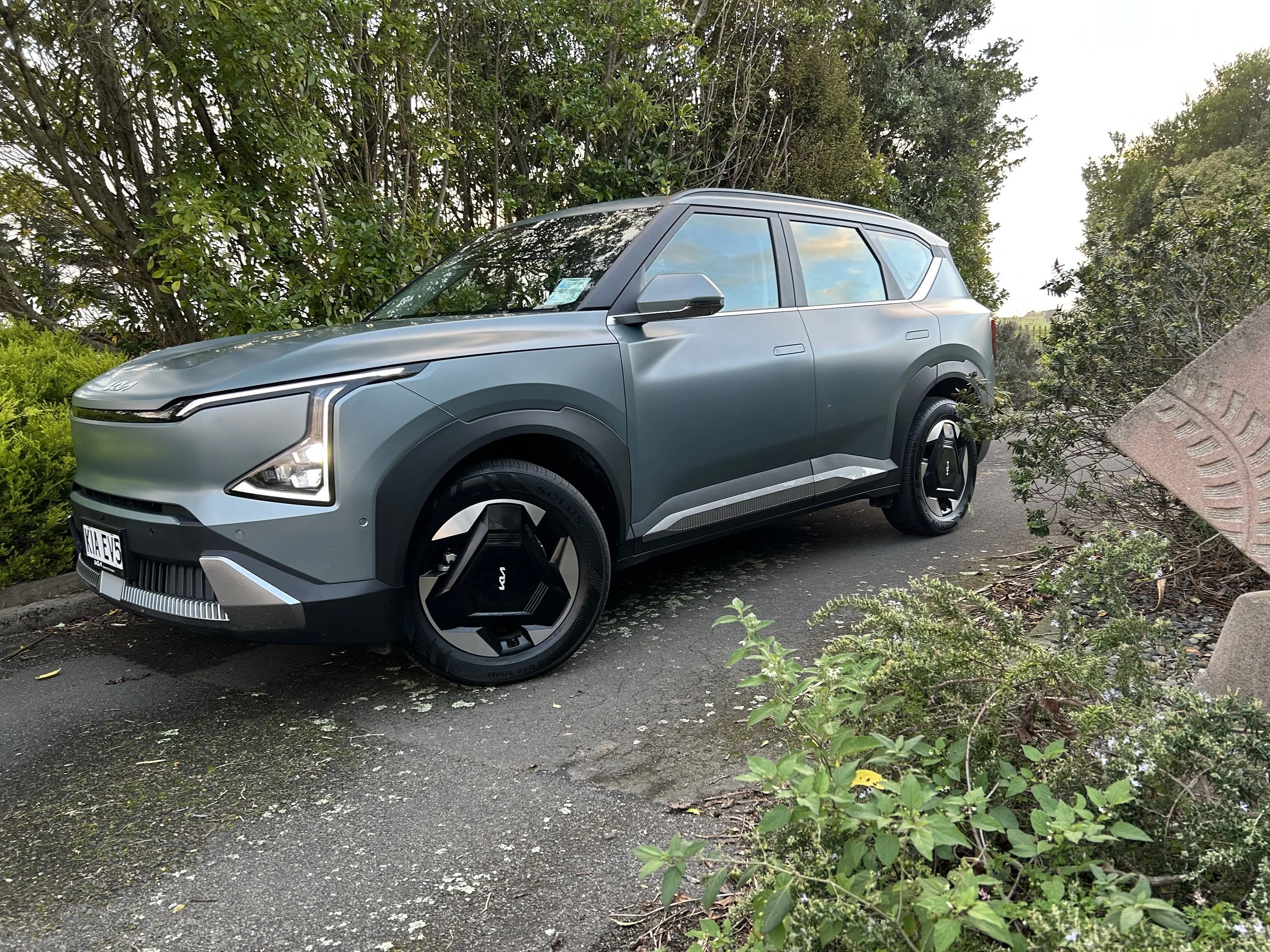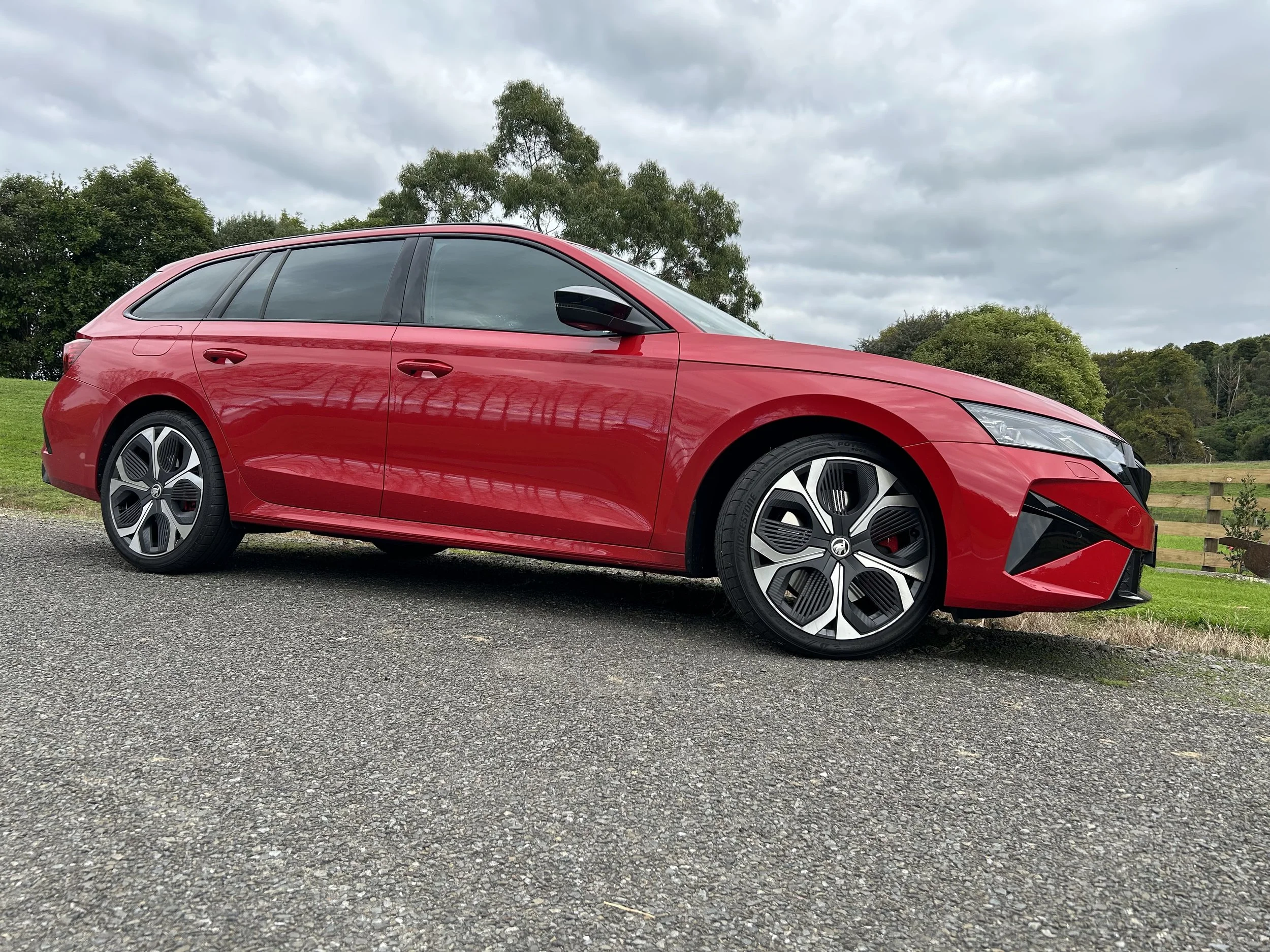Haval H6 PHEV GT road test review: Mean and lean
/The performance thematic is compelling, but the primary reason for buy-in is the high potential for astoundingly decent thrift.
Price: $58,990.
Powertrain: 1499cc four-cylinder petrol engine with dual electric motors; 321kW/772Nm combined (engine alone 110kW/230Nm, front motor 130kW, rear motor 135kW), two-speed automatic; all-wheel-drive.
Dimensions: Length, 4727mm; width, 1940mm; height, 1729mm.
We like: Impressively honest economy; a big, handsome car for the spend.
Not so much: Quirky centre screen; powerful but not overly sporty; some minor equipment lapses.
“WHAT’ll it do mister” is a time-worn question, once only asked purely in respect to pace.
In a truly modern context, it could be as much about thirst as much it might be about thrust.
As a coupe-roofed five-seater sports utility with patent performance ambience, the Haval H6 GT PHEV - a real mouthful - might seem to deserve a more muscled engine than the 1.5-litre petrol it receives.
But, as is common now, the four-cylinder is only half the drivetrain. Count in also dual electric motors, one front, the other rear, feeding from a 35.4kWh ternary lithium battery.
Optimally, it has more punch than some Australia-sourced V8 sedans, tough to achieve a sub-five-second dash to 100kmh, with launch control. Fast starts are hard on the front tyres.
As relevant as the thrust? Restrained thirst. A theoretical driving range of 1000km between refills being claimed seems quite a feat, not least given it has a modest-sized (55-litre) fuel tank, so should those who buy in hope for the best, yet steel for the worst?
The test began with the car fully brimmed, the computer and odometer cleared of previous drivers’ efforts.
Predicted petrol-pure fuel range was 902 kilometres, electric range cited at 171km. So, respectively 98km and 9km short of the manufacturer’s absolutes. A good start or an omen?
A week’s accumulated just shy of 500 kilometres’ driving. When handed back, electric comp has low, with just 15kms range on battery alone. However the read out suggested it could have run a further 516km on combined effort. Impressed? More than a bit.
The car is often regenerating but it seems likely the ace card is the battery’s extra large size; it never depleted to point where it wasn’t assisting. (Just as well with a car in which the home charging cable that should have been in the boot was absent).
Overall average fuel economy for the week was 6.8 litres per 100km. Fairly good, I’d suggest, for a car with a kerb weight (so, no passengers or cargo) of 2075kg that, despite its hunkered stance, isn’t the most aero, either.
The initial regime comprised mainly short distance running; no single trip greater than 25 kilometres. It relied a lot on its EV capabilities.
Then it was time to undertake a open road return adventure, 280kms’ all round, two adults on board. It started with an estimated range of 901km on petrol, with the drive battery depleted to 63 percent but still vowing 83km electric range. The fuel burn average up until then was 4.5L/100km then.
It took the outward leg in economy mode, and the average dropped to 3.8L/100km, the fuel range to 790km. On the return leg, it was driven in Sport. The consumption increased to 4.5L/100k and the fuel range concluded on 655km at point of conclusion. By then the battery was at 27 percent capacity.
Speed limits were obeyed but also adhered to; there was no conscientious effort put into driving frugally.
Haval’s factory-cited fuel consumption and electric-only range are calibrated to the lenient and overly positive NEDC testing cycle, rather than the nationally-preferred WLTP scale.
With that in mind, I’d say the GT PHEV has potential to more than meet real-life expectations. I’d suggest it would require a very heavy-footed effort to achieve less than 100km EV range.
From this experience, the car seems to have high potential to do well if a person simply gets in and drives it, without adjusting any settings off the factory preferences, which prioritise electric involvement.
However, the evidence from this test enforced that it will do even better if you take the time to understand the different drive modes and settings.
That means coming to grips with the 12.3-inch infotainment display dominates the dashboard, along with a 10.25-inch digital instrument cluster and head-up display.
All are presenting all manner of information and the central screen is also the conduit to drive settings that will make significant difference to performance and economy outcomes.
The trick is to work out the best settings for the particular scenario you face. That’s where it can get a bit tricky as the pathways are not as logical as they could be. Fortunately, I had a very patient salesperson guide me through the basics.
Many features are buried within the system, and some of the driving modes take some finding. 'EV Priority' mode is the default and is good for slow speeds and the city.
But everything points to 'Intelligent Hybrid' is absolutely the best idea to get the best efficiency from both petrol and electric sources at higher speeds; it’s still using the electric side quite frequently, but is also happier to revert into interweaving the combustion effort as well, though never seemingly to point where that engine is left entirely to its own devices.
It’s unfortunate the PHEV-specific modes are not fully front and centre. Instead, you need to go from the home screen, by swiping down, to one dedicated to no less than 25 touch-activated operations. You’re looking for a quadrant labelled ‘power mode’.
This gives full battery drive (‘EV’) and ‘EV Priority’ as alternates to ‘Intelligent Hybrid.’ The first and last only enable until you cycle the ignition off, then it regresses back to ‘EV Priority’. You get used to getting in the car and establishing your specific settings after firing up the ignition, but before driving off. Enacting mode changes on the move is possible, but with this car swipe involvement from the home screen can be fickle.
A pre-flight ritual also allows opportunity to sorting out the driving mode; ‘in this experience, even though ‘Eco’ was clearly going to be the most thrifty, it also retarded performance. ‘Normal’ seemed a good balance between both.
There’s also ‘Sport’ which enhances the throttle sharpness a bit; the all-wheel-drive setting seems superfluous to seal driving - the car is effectively determining when and how it feeds power to the front and/or rears anyway - and, obviously, unless you’re in them, ‘Mud’ and ‘Snow’ can be left well alone.
While on this page, you can adjust the steering mode - ‘Comfort’ is the mid-point I found better to the alternate ‘Light’ and ‘Sport’.
The other involvement worth looking to is regenerative braking. That’s located in a different place, which makes it tricky to adjust on the move to your tastes. You can choose between a few different modes, including a more aggressive one-pedal version.
Getting the impression it’s smart but almost too much so? Certainly, the reliance on screen operated controls for everything up to and including heating and ventilation can be a frustration. Taking your eyes off the road to operate them guarantees a ticking off from the attention monitoring system.
Driver assists are in proliferation all for a good cause, but sadly as has become usual for China-made cars, they are over-tuned, becoming so intrusive it’s hard to see itself winning any favours for having them. Putting a bit of tape over the face scanning camera will shut them down, but recalibration would be a better fix.
The self-correcting software within the steering is particularly wearying; my wrists ached after that open road run. Tailored to work with the lane keep, it would sniff out - and sometimes react quite strongly to - any kind of road marking within its range. Not just those that were relevant, but also some that were not.
Other road users always knew whenever I enabled the Sport mode, because that triggered the indicator lights to double flash in unison. Apparently this can be de-activated within the menu system. But exactly how? And, more importantly, why would any brand imagine this kind of interaction would ever be useful?
Other aspects of the car are thankfully far more straightforward. One being the styling.
This GT version of the HS adopts a more adventurous look that I found quite appealing. It’s an elegant shape, with - dare I say it - an air of the Jaguar F-Pace about it from certain angles.
The slimline headlamps are another cool look; the car’s lighting reach on full beam is strong, but flick back to low beam - a hand action action as auto high-low is one of the few nice-to-haves Haval doesn’t provide - and you might well wish for better illumination.
The cabin is comfortable and strongly specified, all in all. There plenty of soft-touch materials where it counts - big tick for the entire console being finished in a suede-like material - and the brand’s focus on value for money is very apparent with the amount of equipment thrown in as standard.
There’s just the one trim level, so you buy into 'Comfortek' suede leather seat trimming, with heating and ventilation up front and dual-zone climate control. There's also a microfibre leather wrap on the steering wheel, eight directions of electric adjustment (and memory) for the driver and four ways for the passenger.
The car rides on 19-inch alloy wheels, an electric tailgate, has a panoramic sunroof with blind, keyless entry, privacy glass and LED lighting at both ends.
If the native infotainment systems seem a bit unsettling in their presentation, then you can utilise its Android Auto or Apple CarPlay capability, which work as well as expected.
It has a wireless recharging pad, hiding under the buttressed infotainment stack, but not wireless hook up and cable tethering is a bit of a faff.
While it has identical-looking USB inputs in mirrored placement each side of of the centre console, the one to establish connection with devices is on the passenger side, whereas the port closest the driver will only charge. You’d think it’d be an easy swap for right hand drive configuration, but it hasn’t happened. The port locations are also awkwardly low and the car was bit fussy about which cables it liked, I went though a couple that work fine around the house before getting on that would pass muster.
Storage opportunities are decent and include ability to convert cupholders on top to to this. In respect to overall cabin room, obviously the second row and boot are impacted by the sloping roof line, but not to point of ruin by any means.
The second row will be tight for just the very tall and offers enough leg room for adults. That zone also has power outlets and air vents.
That fastback look is an issue for rearward visibility, sadly. You’ll be far more reliant on the sensors and reversing camera than the rear vision mirror, as the view through that is impeded.
The high-set luggage cover is one problematic but the tailgate angle being so extreme it basically render the glass area down to a narrow slit is also a big factor; I’m tall and could barely see anything. Side and frontal views are much better though, again, when in traffic it’s more likely going to be the blind spot alert that warns to encroaching traffic than the slim line wing mirrors.
The powertrain has enough oomph to deliver a healthy dose of instant power to make overtaking more effortless, and it has no issue with open road pace; it isn’t much fazed by even steep ascents, either. You don’t want to take that GT designation too seriously, all the same, as the dynamic side is a bit of a mixed bag.
The suspension is firm but not finely tuned for fun and there’s not much in the way of feedback from behind the wheel. and the ride quality is fine until you reach more serious imperfections in the road, which easily transmit into the cabin.
The mechanical refinement is very good; engine noise only becomes plainly audible when you’re truly punishing the throttle, else it is a quiet car, with good wind and road noise suppression.
For those who prioritise practicality, the PHEV will eventually be offered on the regular H6 SUV.
In the meantime, the big player in this sector, the Mitsubishi Outlander, won’t be threatened until its ace card of being a seven seater is also played by Haval.
However, they and others should keep a close eye on a technology that, in my experience, runs closer than theirs to effectively operating like an electric car you can drive without range anxiety, given you can just top it up with petrol if there’s not the time or opportunity to plug in and charge.





















